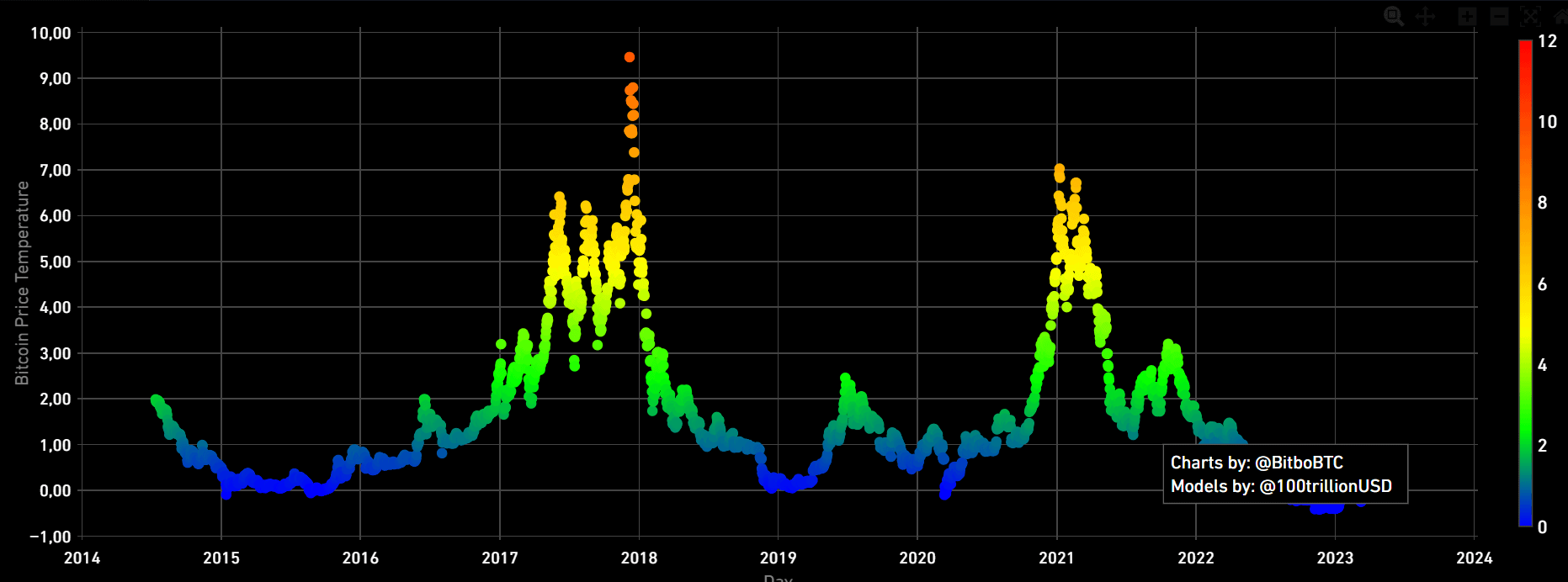News - The reason Bitcoin is still undervalued
By
The reason Bitcoin is still undervalued
This week marked the beginning of summer and BTC is still at freezing point. Will a Bitcoin ETF take the temperature to the highs?
Heat and drought had firmly gripped the Federal Republic of Germany, and then came the storm. But for the end of June, temperatures up to 28 degrees are forecasted again in Germany. Will Bitcoin thaw again as a result? After all, the reserve currency has been at freezing point for several weeks, at least according to the so-called Bitcoin Price Temperature (BTP).
First, halving Bitcoin creates a supply shortage
To understand the index, it is first important to understand Bitcoin halving. In this process, the supply is halved, making the block reward smaller. This happens every 210,000 blocks over a period of about four years. According to Bitcoinsensus calculations, the next Bitcoin halving will occur on April 26, 2024.
To ensure that the halving is repeated at equal intervals, there is the Mining Difficulty. As new miners join the network or as an existing miner upgrades its hardware, the hashrate increases. The same thing happens with the Difficulty. The difficulty increases as more is mined. The difficulty decreases proportionally as Bitcoin's hashrate decreases. To prevent the block time from continuing to shrink, the difficulty adjusts every 2,016 blocks. This results in an average block time of ten minutes.
Next, the price goes up
In the past, the Bitcoin price rate rose sharply after each halving. Although this took several months each time, the market capitalization of the reserve currency rose to new heights after each halving. A look at the 4-year cycle confirms this. Yet Bitcoin is not only so successful because of the supply shortage. Pricing models that claim this have long been considered failures.
Meanwhile, there are other indices that are much more flexible in reflecting the degree to which the current BTC price is normal or distorted in the context of its own price trends and volatility, especially in the context of 4-year market cycles. One of these is the Bitcoin Price Temperature (BTP).
Bitcoin at freezing point: When will summer come?
The index is a measure of the difference between the current bitcoin price and the 4-year moving average. The BPT is calculated by first calculating the difference between the daily price and the 4-year moving average and then dividing this number by the standard deviation of this 4-year window. Applied in practice, this results in the following summary:
Bitcoin has never been so cold I Source: Bitbo
The BPT metric is a kind of "temperature control." Higher values represent a possible overheated price level. Conversely, falling or negative scale values indicate relatively low BTC prices, depending on the 4-year average.
Clearly recognizable: the crisis year 2022. After the collapse of FTX in November, the crypto winter dawned. Befitting the season, BPT dropped to minus temperatures, an all-time low. As the crypto industry continues to stabilize, prices are also thawing again, led by Bitcoin, which at the time of writing is listed at $30,050. By itself, however, the BPT is not yet an indication of a future bull rally. Still, a comparison with the MVRV Z-score is striking because the trend is almost identical.
This is no surprise. After all, this indicator measures the ratio of market capitalization to the so-called "realized value," i.e., the actual value stored in Bitcoin. If the ratio of market capitalization to realized value is below 1, it indicates overselling, and then a trend reversal becomes more likely. Here's an example. A trend is already visible: Since the beginning of the year, the value is positive
Bitcoin: Bull run or summer lull?
However, meaningful analysis requires a holistic view. There is more to consider, such as the increasing adoption of Bitcoin worldwide or the potential introduction of a bitcoin spot ETF by the world's largest asset manager, BlackRock. Thus, the recent bull run can be largely attributed to BlackRock's involvement.
Nevertheless, the Bitcoin ETF currently faces uncertainty. At present, it is merely an application to the SEC. Historically, the U.S. Securities and Exchange Commission has rejected all previous applications. Furthermore, the tense situation surrounding crypto exchanges Binance and Coinbase, as well as macroeconomic concerns, continue to affect investor sentiment. It remains uncertain whether an ETF and rising temperatures, particularly concerning the BTP, will be sufficient to reignite bullish sentiment. However, just as winter is always followed by summer, the crypto market remains unpredictable.







